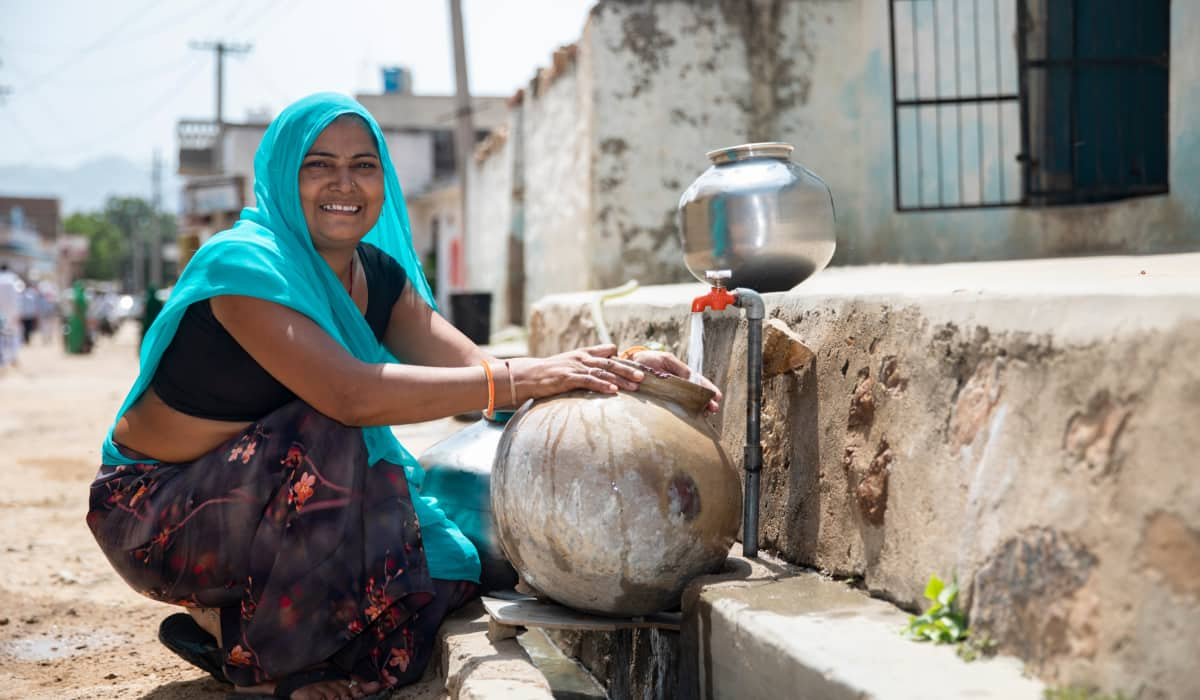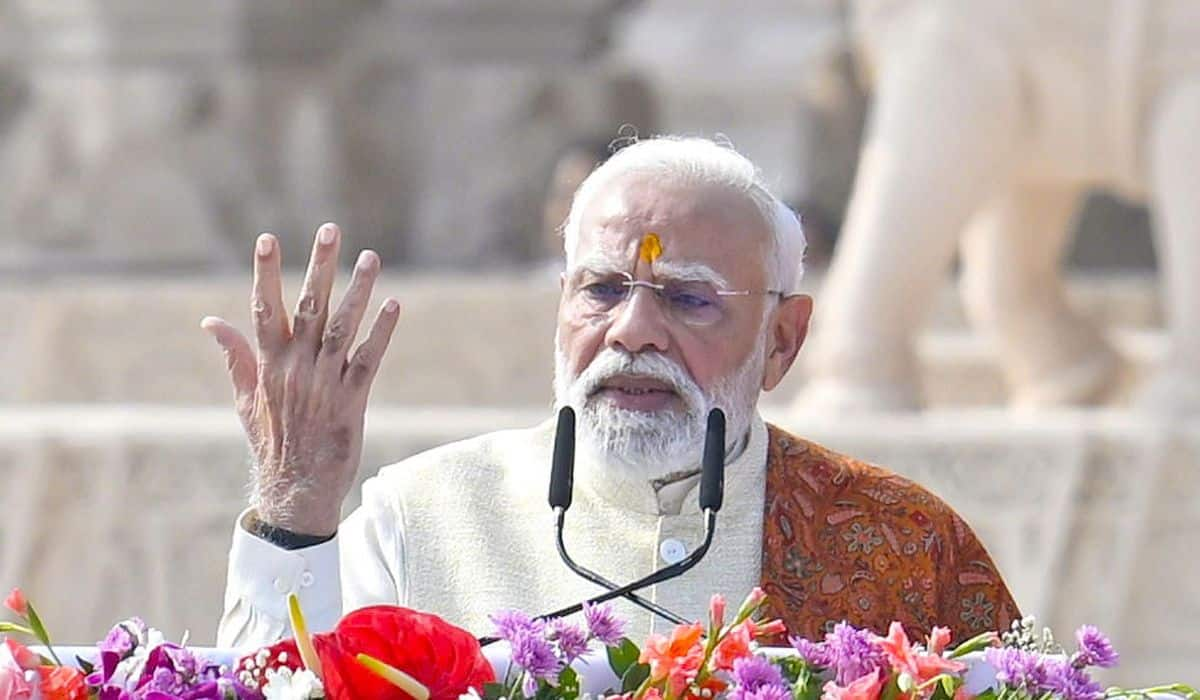PM Narendra Modi shared his vision for the Sansad Adarsh Gram Yojana on it’s launch.
‘One of the biggest problems for us has been that our development model has been supply-driven. A scheme has been prepared in Lucknow, Gandhi Nagar, or Delhi. The same is attempted to be injected. We want to shift this model from supply-driven to demand driven through Adarsh Gram. There should be an urge developed in the village itself.
All we need is to change our mind set. We need to unite people’s hearts. Normally MPs are engaged in political activities, but after this, when they will come to the village, there will be no political activities. It will be like family. Decisions will be taken sitting with the people of the villages. It will re-energise and unite the village.’
Saansad Adarsh Gram Yojana (SAGY) was launched on 11th October, 2014 with the aim to translate the comprehensive vision of Mahatma Gandhi about an ideal Indian village into a reality, keeping in view the present context. Under SAGY, each Member of Parliament adopts a Gram Panchayat and guides its holistic progress giving importance for social development at par with infrastructure. The ‘Adarsh Grams’ are to become schools of local development and governance, inspiring other Gram Panchayats.
By involving villagers and leveraging scientific tools, a Village Development Plan is prepared under the leadership of Member of Parliament. Thereafter detailed project reports are prepared and submitted by departments to the state government. State Level Empowered Committee (SLEC) reviews, suggest changes and give priority allocation of resources. As of now, 21 Schemes have been amended by various Ministries /Departments of Government of India to give priority to SAGY Gram Panchayat projects.
At district level, monthly review meetings are conducted for each Gram Panchayat under the chairpersonship of Member of Parliament. Each projects are reviewed in the presence of representatives of the participating line departments and the progress is updated to the state government. It is expected that ach Member of Parliament will spearhead development of one Gram Panchayat as a model one by 2016, then two more by 2019 and thereafter five more by 2024. 696 GPs have been adopted by MPs across the country so far.

Each District Collector has nominated a Charge Officer of sufficient seniority to coordinate the implementation at the local level who will be fully responsible and accountable for the implementation. Ministry of Rural Development organised training programmes for 653 Charge Officers at 9 regional locations across India. A National Workshop was organised on 23rd-24th September, 2015 at Bhopal by Ministry of Rural Development, where MPs, State Governments, District Collectors, Gram Pradhans from across all States were invited. The selected Good Practices by National Level Committee of the Ministry of Rural Development were presented through a detailed exhibition so that similar good practices could be adopted in SAGY Gram Panchayats. The Ministry has also developed 35 indicators as ‘Panchayat Darpan’ to monitor the progress of the SAGY Gram Panchayats.
Some Success Stories:
In Laderwan village, Block Trehgam, District Kupwara, Jammu & Kashmir, the major activity of the people is agriculture. To promote scientific agriculture, the mobile numbers of 379 farmers were linked with the Krishi Vigyan Kendra (KVK). The KVK disseminates sms messages on weather forecasts and messages on the recommended package of practices for specific crops at critical stages of crop growth. This has been undertaken under the guidance of the Member of Parliament, Shri Muzaffar Hussain Baig. As a result, farmers now get regular agro-advisories on their mobiles. These include critical messages on scientific sowing practices, soil testing, crop protection, agronomic practices, post-harvest technologies and market information. This enables people to take informed decisions relating to crop production and marketing their agricultural produce.
Maravamangalam, situated in Sivaganga district, Tamil Nadu was chosen as the Adarsh Gram by the Member of Parliament (Rajya Sabha) , Dr. E.M. Sudarsana Natchiappan. The Member of Parliament identified the potential areas for improvement and to promote rural livelihoods. Coir, leather and coconut trainings for the communities were envisaged and promoted. The MP organised several awareness programmes with the support of the District Administration and Alagappa University. He also roped in specialist training partners for imparting training to the people with the support of the Coir Board of India, Coconut Development Board of India and Central Leather Research Institute.
He coordinated with the training institutions for initiating a two months Coir training programme with the objective to educate the people in becoming successful entrepreneurs. 120 women for coir training, 112 people for leather training and 27 men for coconut Training were enrolled in the training programmes. After the trainings are completed, all efforts will be made by the district administration and the training partners to provide financial assistance to the successful trainees for starting their own social enterprise and support their livelihoods.
The Member of Parliament Shri Bidyut Baran Mahato in his adopted Gram Panchayat of Bangurda realised that very minimal efforts were being taken with regard to health and hygiene of adolescent girls in remote and inaccessible villages in East Singhbhum, Jharkhand. There is high prevalence of Anaemia and other ailments, especially among women and adolescent girls. In order to address this, he initiated a series of health camps specifically targeted towards the adolescent girls. The health camps were organised in the Kasturba Gandhi Balika Vidyalaya, where more than 188 adolescent girls were screened. As a result, many of the girls were found to be suffering from various gynaecological diseases, urinary tract infection and skin diseases, which hitherto, were suppressed by them owing to socio-cultural taboos.
It was also found that most of these ailments were related to unhygienic lifestyle and filthy surroundings. Interventions are underway to create awareness on personal hygiene among the adolescent girls and women. This will be a sustained intervention to be carried out regularly in the villages.
















